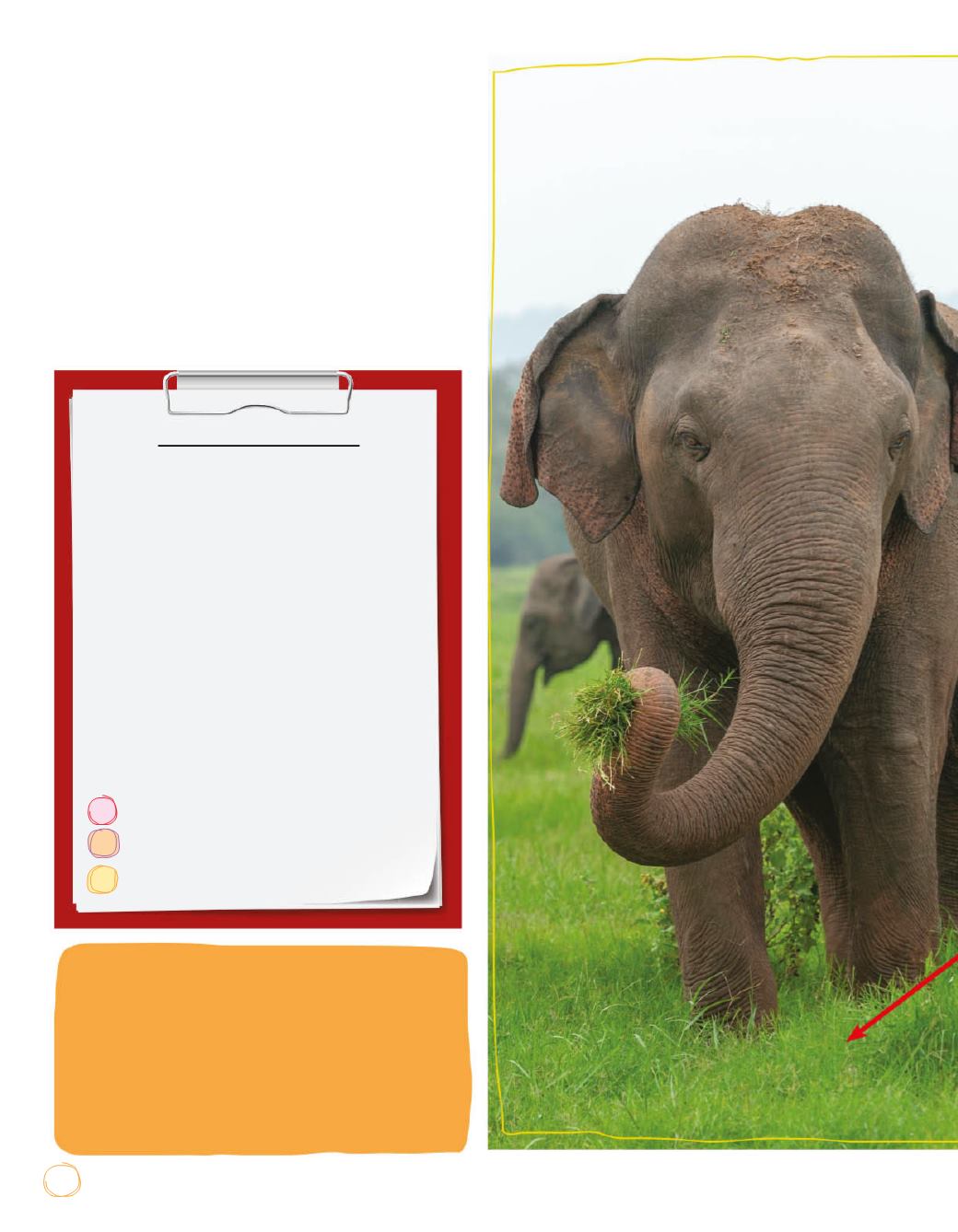
To the Rescue
2
1
A
n important part of zoo life is saving
ENDANGERED animals from the wild. Vets
play a vital part in bringing in new animals
to the zoo. A female Asian elephant is in trouble
and the zoo have agreed to bring her to the new
elephant enclosure. For the short journey from the
airport, the elephant needs to be transported in a
crate. It is the zoo vet’s job to ensure the crate is big
enough so the elephant is not hurt.
THE CORRECT CRATE SIZE
The zoo’s maintenance workers have drawn
some designs for the elephant’s traveling crate.
All of the designs use materials strong enough
to withstand any kicks, but they need to think
about all of the elephant’s needs.
The specifications for the crate are as follows:
• The crate must
be slightly
higher than the
elephant.
•
An elephant must be able to sit down, stand
up, and turn around in its crate.
•
The crate should have a roof made of fine
netting or burlap
(coarse fabric).
• The crate must have ventilation (air holes).
Look at the crate designs in the DATA BOX
opposite.
Which crate would you choose?
Why?
How much space will the elephant have
above her in the crate?
Body length: 18 feet
Animal Care Fact
To keep an elephant clean and dry during its journey, the floor of
a traveling crate must allow the elephant’s urine to drain away.
Crates often have a false floor made from a metal grid so that any
liquids can drain through the small gap between the grid and the
bottom of the crate. Both the floor grid and the walls of the crate
are padded with rubber matting to help protect the animal during
the journey. The floor grid must be comfortable to lie on, too, so
the rubber matting is covered with a thick layer of straw.
3
6


